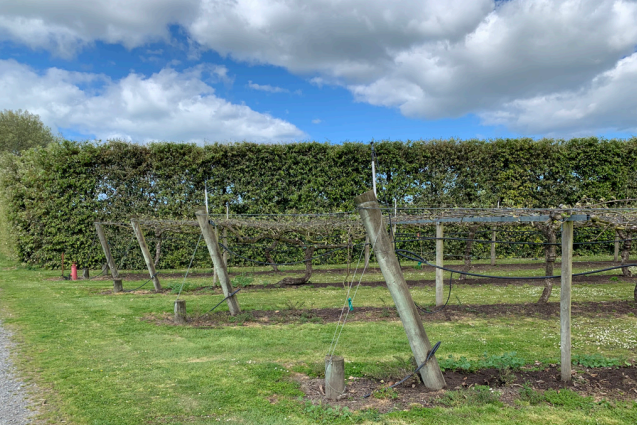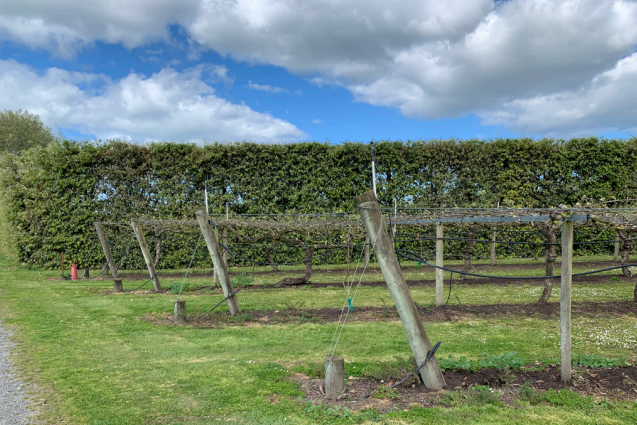Written By: David Cranwell
Requested by Tim Forde Chair HB Farm Forestry
Botanical Name: Quercus Leucotrichophora,
Common Name: Banj Oak, Himalayan Evergreen Oak
It's your choice to plant the Banj Oak either for
Ground retention
Hedge
Nurse tree
Carbon sequestration
Timber
Soil improvement
Truffle production
In addition, by buying the Banj Oak you are supporting children in the Lower Himalaya's.
Bulk orders can be made through Marie Taylor www.planthawkesbay.co.nz
Marie grows them for us.
or
for single or small quanitites you can purchase them from our online shop
The above is a wide ranging list, but after 30 years of experience with the tree under New Zealand conditions. We can confidently say that the tree performs to and above expectations.
GROUND RETENTION
Ten years from planting above a slip line, on unstable soil which has not moved.
The trees since planting have had no specialist care or attention, basically they looked after themselves on a dry West facing site.
Looking across at Banj Oaks above slip
HEDGE
Kiwifruit shelter planted 10 years ago clearly showing permeability preventing wind turbulence.
The trees are inexpensive to manage as the branches are light minimising trimming costs
and the roots go down rather than spread.
NURSE TREE
The tree has the ability by hydraulic lift to raise soil water from the subsoil,
releasing it at ground level benefiting the young plants.
Kumarahou, Rewarewa & Kanuka under a 20yr old Banj Oak.
The tree has the ability to act as a nurse tree for the shallow rooting indigenous plants.
CARBON SEQUESTRATION
The Banj Oak with its large evergreen leaves is an excellent tree to capture carbon. With its natural spread not only provides shelter for farm animals, at 100 trees per hectare could qualify for The Emissions Trading Scheme. Based on photosynthesis data, carbon sequestration is likely to exceed that of Pinus radiata.
TIMBER
In India the timber of the Banj Oak has not been valued, it's main use is for plough shears and charcoal.
Some small and ongoing trials of timber from locally grown Banj is starting to show that the tree has potential to become a fast growing hardwood, on milling the timber appears quite stable with little movement. Due to the tough bark the Banj Oak is fire resistant, the leaves go but they re sprout. 
This Group of 3, 18yr old Banj Oak in a pampered garden setting
have reached 19BH girth. Banj oak can range from just under 100cm to 140cm at year 20.

Timber Tray

Hand Crafted Gift Boxes

Timber Grain, White Oak family virtually no sap wood
SOIL IMPROVEMENT
Annually when the sap rises, the flowers & new leaves appear. The Banj Oak sheds the older leaves which if undisturbed creates a layer of fast decaying leaf litter. Which is high in Potassium, Phosphorous, Nitrogen and Calcium.
The villagers of the Lower Himalaya's for centuries have collected the Banj leaves making compost to enrich their vegetable gardens.

TRUFFLE PRODUCTION
In 2017 Southern Woods Nursery carried out a successful truffle inoculation trial with 100 Banj acorns supplied by The Himalayan Oak Trust. They were surprised with how readily the Banj accepted the Truffle Mycorrhizae.
SUPPORTING THE EFFORTS OF THE VILLAGERS IN THE LOWER HIMALAYAN HENWAL VALLEY TO REPLANT THEIR DIMINISHED BANJ FORESTS

Photograph of Mr Thapliyal talking to the pupils on working with our Trust at their School Ranichauri
The Himalayan Oak Trust has been raising funds by the sale of Banj oaks to New Zealanders since 1997.
Since 2007 the Himalayan Oak Trust has developed a long standing relationship with HIMCON Himalaya Consortium for Himalaya Conservation.
They are a passionate group who work with the villagers across many fronts from tree planting, Spring restoration and water storage plus helping educate the village children.
TREE AVAILABILITY MARIE TAYLOR PLANT HAWKES BAY LTD
www.planthawkesbay.co.nz
Every tree sold receives a donation which is remitted to HIMCON



